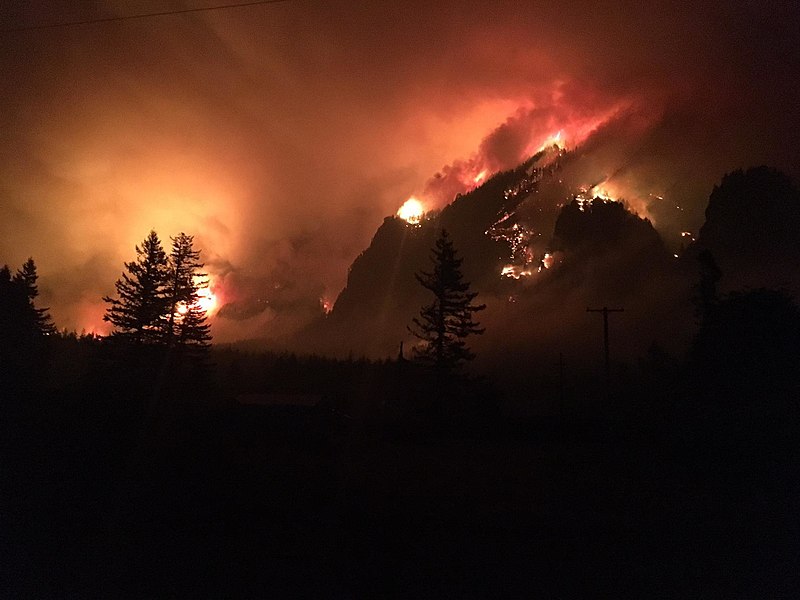In case you didn’t know it, I am a minor-level foodie. I haven’t run around to every single pricey restaurant in Portland, but I am an unabashed locavore who loves to cook. And as an environmentalist I’m keenly aware of where my food comes from.
When I eat, I am not just consuming calories so I don’t die, or eating something I like so that it’s an enjoyable experience. I am consciously mindful of the fact that the animal, plant or fungus I am about to ingest was raised in a particular place and in a specific manner. It lived a life, perhaps a good one, perhaps a bad one, and that life now ends in its physical remains becoming a part of my own still-living body. I am made of molecules that came from around the world, though increasingly from my local region.
Connected to this sense of place is a concept known as terroir, which in French means “soil.” Most commonly encountered in the discussion of wine, terroir describes the qualities of the land and its tending that influence the taste of the food or drink it produces. Some of these factors are climate, weather, soil quality, fertilization and other soil treatments (or lack thereof), food given to animals, stress the living being experienced during life, and even how it was slaughtered or harvested. The reason that a wine expert can tell a wine grown from a particular valley in France is because of the terroir that affects the flavor of the grapes that created it.
I first became aware of terroir through the Slow Food movement founded by Carlo Petrini, a response to the growing influence of fast food and heavy processing in the global food market. Slow Food is about locally grown foods which are carefully prepared and then enjoyed consciously rather than simply inhaled for basic calories. Extra attention is paid to the source of each ingredient, where it was grown and how it was cared for, and even the people who attended to it from life to death. Terroir is how the unique taste of that ingredient reflects on the land it came from. Combine several local ingredients together in a recipe from regional cuisine, and you get a veritable symphony of terroir that may be absolutely unique in the world.
Let me give you a more concrete example. I don’t drink wine often, so I can’t really use that as a viable image, though those of you who are wine lovers may find some of this familiar. However, I use olive oil extensively in my cooking, not just for the health benefits but the flavor as well. Canola oil is just greasy compared to the body of a good olive oil. And I am fortunate in that CostCo carries relatively inexpensive olive oils that have Protected Designation of Origin, meaning that yes, this is pure olive oil of high quality that hasn’t been sitting around in a warehouse for years, and the label tells exactly where it came from.(1)
Most of the olive oil on the market is old or poor quality and has lost much of its flavor; some of it has even been cut with cheaper oils like sunflower. If you taste it and then taste real, fresh, extra virgin olive oil, the latter has a much more vibrant taste. It tastes like olives, rather than sunflower oil mixed with a bit of grass. Different PDO olive oils have their own unique notes, much like wine. That’s the terroir speaking, in which the soil and the sunlight and the care of harvest are all reflected in the final flavor. To me, a good olive oil tastes like the land it came from, and even if I’ve never been there I can still imagine it.
So why is this important to paganism? Well, if you ask a lot of pagans, our spirituality is about the land. Honestly, many pagans celebrate a more abstract conception of land rather than getting down and dirty with the soil they live on; if you’re chanting about Earth, Air, Fire, Water but you don’t know much about your local climate, geology or watershed, you have a lot of opportunities for expanding your nature-based practice.
We also make a lot of talk about harvest festivals in late summer and the first half of autumn, but our ritual feasts are often store-bought breads and imported produce rather than anything we grew or prepared ourselves.(2) If we’re really going to celebrate the harvest, doesn’t it behoove us to not only use local food and drink, but also to familiarize ourselves with when our actual growing and harvest times are, and what’s growing when?
Terroir is an excellent opportunity to root your paganism in the actual land you’re practicing on. You’re literally eating and drinking the land; the molecules in locally-produced food came from the same general area that you are honoring, and they will then be incorporated into your own physical form. By paying attention to the flavors that make this area’s flour unique, or its fish especially tasty, or its vegetables heartier, you are experiencing your land, and by consuming that food you are making the land a part of you. And when you utilize recipes and other elements of cuisine created by people who have lived on that land a while, that gives you even more relationship with place.(3)
In the United States, most ingredients in our food isn’t labeled. In our many processed foods ingredients from countless sources are all blended into one homogenous lump. You won’t know where the wheat, rice or oats in your breakfast cereal came from, or where the sugar cane grew. Meat is no longer labeled with what country it came from or where it was slaughtered. Produce may have a sticker saying what state or country it came from, but no more specific than that; if I buy a Washington or Oregon apple I couldn’t tell you what farm it was from unless I happen to buy it from the farm itself.
To counteract that, I offer this little introduction to terroir. To start, pick a single food item that is produced locally. It can be something straight out of the ground, like a vegetable or fruit, or which requires a little more preparation like meat or cheese. Get some of that local food, and also a few examples of the same food that were produced in other identifiable places but further away–for example, an apple from a local orchard in Washington, and then another from California, and another from Mexico. Or pick something that has a reputation for its terroir–get a piece of real Parmigiano-Reggiano cheese from Parma, and then a “Parmesan” made somewhere in the United States, and maybe some of that powdered stuff in a can. Have a bit of a tasting, where you eat a bit of each one at a time, and pay attention to the differences in flavor and texture with each bite.
Be more mindful of the origin of all your food to the best of your ability. Think about the land it came from, and how it got from there to where you are now.(4) When you celebrate holidays with food, choose those that are made locally or that you create yourself from local ingredients, to the best of your ability and budget, and especially for harvest festivals. When you eat, consider it a communion with the land, not just something tasty. Remember that you carry around bits and pieces of every place that has fed you, and this gives you a deeply intimate and physical connection to those locations. In this way you can deepen your relationship to nature beyond the symbols and rites, and into the core of your very being.
1. Not all of the olive oil that CostCo carries is PDO certified. Generally the big plastic jugs aren’t; look for glass bottles, and especially look for a PDO label and the country of origin somewhere on the label.
2. I totally get that not everyone has the space, money or ability to garden. But if you’re going to pour a bit of money into a seasonal ritual, set some aside to get a locally baked loaf of bread or some apples from a local farmer, or whatever your regional farms are producing.
3. Here in the Pacific Northwest there are a few different local cuisines going on. There are the foodways of indigenous people, some of which have been shared with others. There are the cuisines of the various waves of immigrants over the past couple of centuries which meld local ingredients and far-away traditions. And there is a more self-conscious “modern” Pacific Northwest cuisine which is an attempt to combine all of these to one degree or another, again with a strong emphasis on local ingredients. Please understand that where you are, the local cuisine may not be open to all, especially where indigenous people have been subjected to abuse and oppression and therefore aren’t willing to also open their foodways to the perpetrators thereof.
4. To be brutally honest, the way food often gets to us is fraught with both human and environmental abuses; but that’s a whole other post for another time.
Did you enjoy this post? Consider tipping me on Ko-Fi, becoming my patron on Patreon, or purchasing one of my books! This self-employed author and artistreally appreciates your support 🙂


















